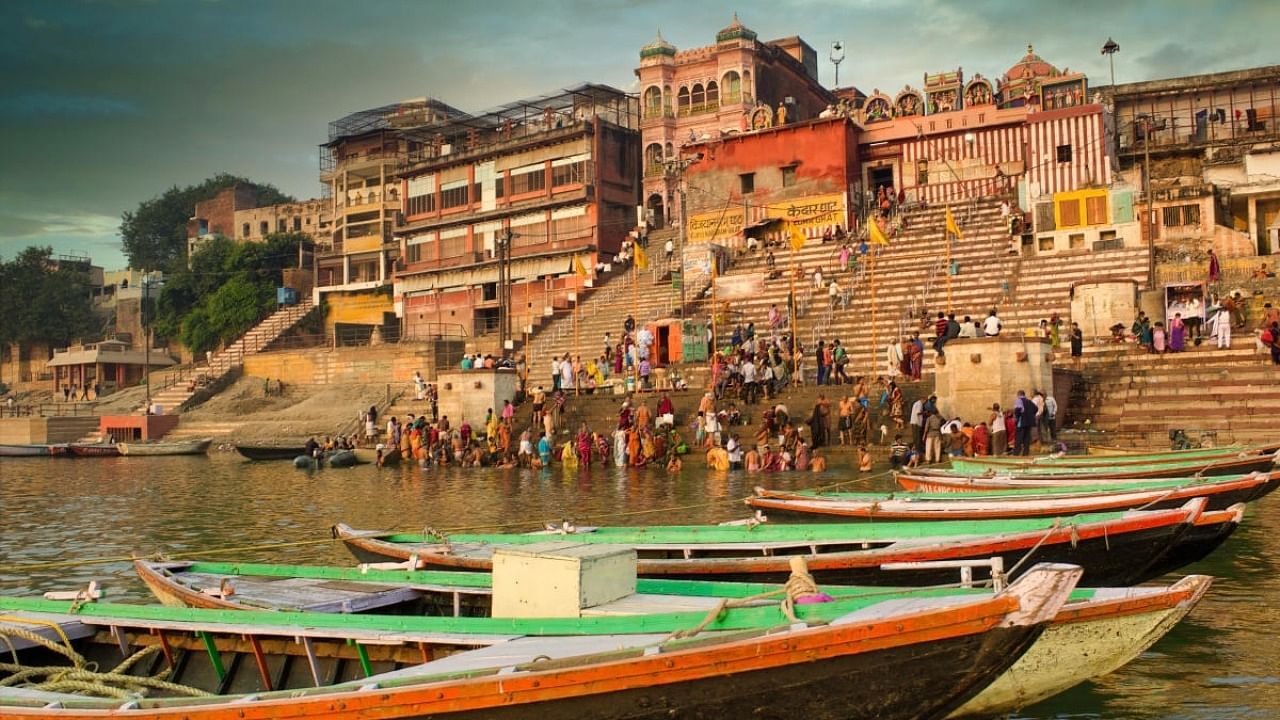
The renovation work at my place was finally over. The bulging suitcases and bags stood screaming for my attention, threatening to burst open at the seams at any time. All the stuff inside them is waiting to be put back in its place. Without wasting time, I packed the one rare empty suitcase and headed for Benaras. I needed a break urgently, first.
Saffron-clad sadhus with matted hair, their ash-smeared visages adorned with tilak, stared back at us from murals at Varanasi, the city that spawns between rivers Varuna and Assi, the city of ghats, banarasi sarees, and paan.
“Hi, I am Gangaram Kewat,” a sprightly young boy hustled us for a boat ride on the Ganges for the famed deepaarti, quite in the same tradition as the kewat (boatman) who ferried Lord Ram. The euphoria of the visual spectacle at Dashashwamedha Ghat was tamed by the sobering sight of funeral pyres burning at Raja Harishchandra Ghat, named after the legendary king who supposedly donned the role of a chandala under a curse.
The four “gentle” lions of the original sandstone Lion Capital atop the Ashokan Pillar looked down on us at the Sarnath Museum, along with other 6831 exquisitely sculpted artefacts from the Mauryan, Kushana, and Gupta periods, some of them sacrilegiously defaced with paint.
“Get down,” we reprimanded a few visitors taking selfies atop the Chaukhandi Stupa, the 93-foot brick stupa laid in mud mortar, its octagonal crown erected by Raja Todarmal’s son, marking the Mughal influence. “All we need is a little space to circumambulate the stupa,” rued an elderly Tibetan, attracted to us by our vigilantism, pointing out a Hanuman temple close-by, its fence jutting into the ancient monument on one side, even as he lit incense sticks near the edifice (another prohibited activity).
Nudging the teeming crowd, along with the vehicles, motorised and non-motorised, we maneuvered our way through the meandering by-lanes to the Kashi Vishwanath temple. “Varanasi is not as expansive as Delhi. The use of fossil fuel-driven vehicles can be easily restricted within its precincts,” noted my son, who analyses air quality data. A sonorous azaan wafted from the Gyanvapi mosque, snuggled cheek by jowl next to the Kashi Vishwanath temple, where the late Ustad Bismillah Khan once used to play his shehnai to invoke the Lord.
“Proud to say we are Indians,” a proclamation outside a shop bearing a Muslim name juxtaposed against “Say it with pride that I am a hardcore Hindu,” splayed on graffiti (both written in Hindi) in a city where chandan-smeared foreheads highlighted with vermillion trishuls jostled
with skull-capped heads and burqa-covered faces trying hard to “eat, pray, and love.”